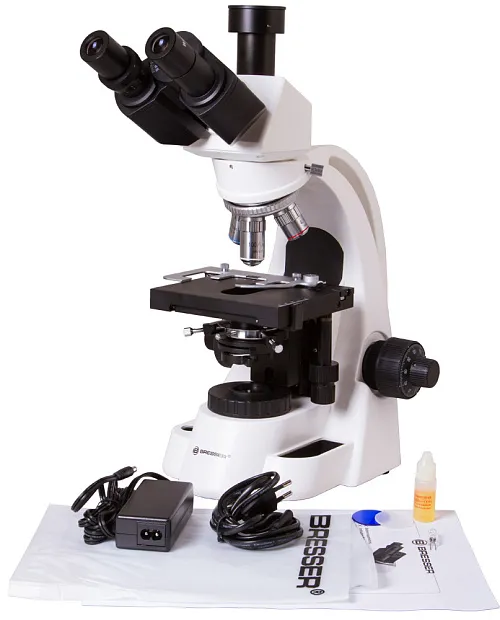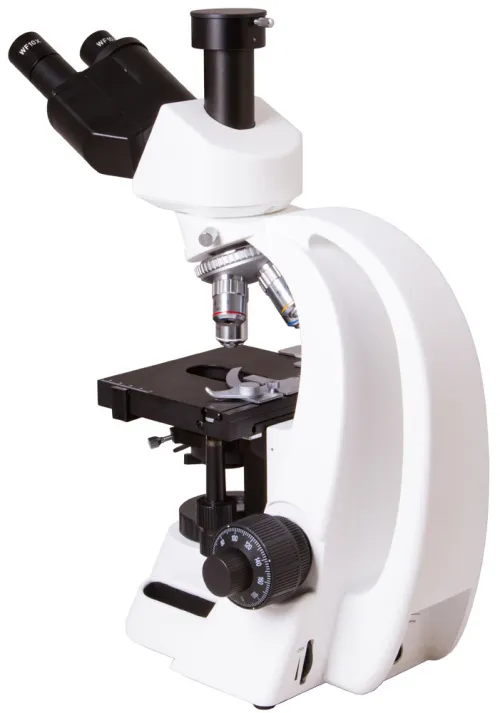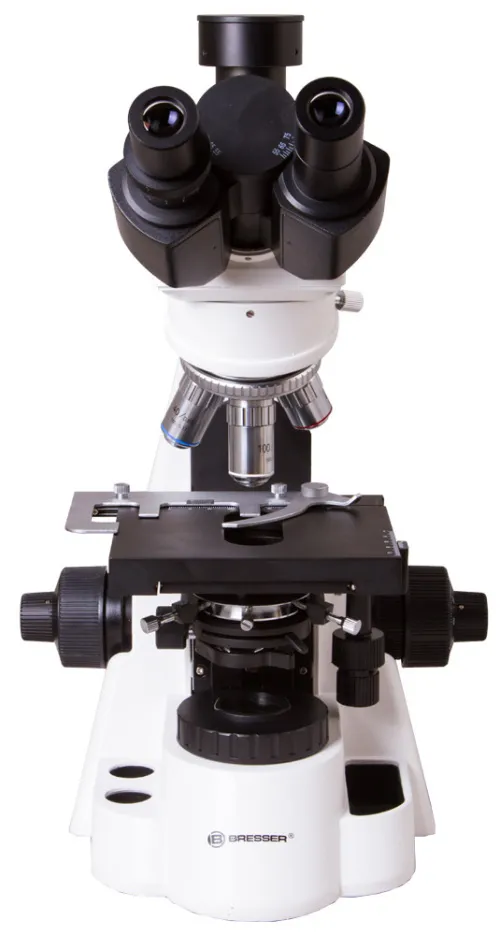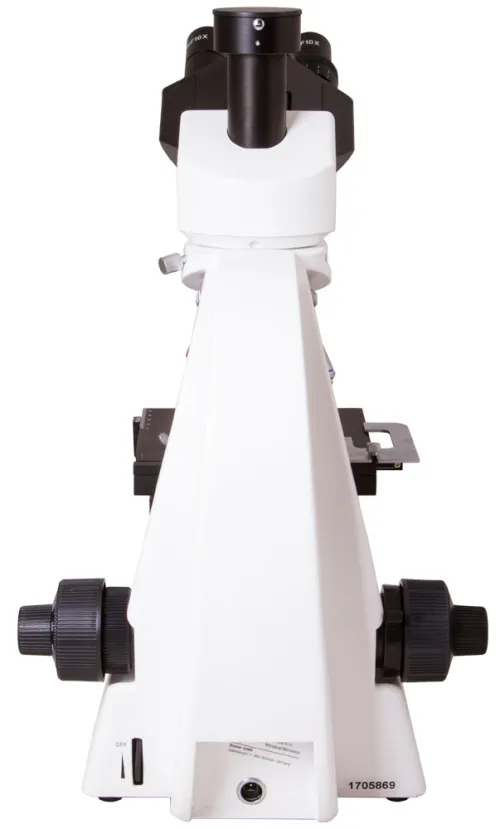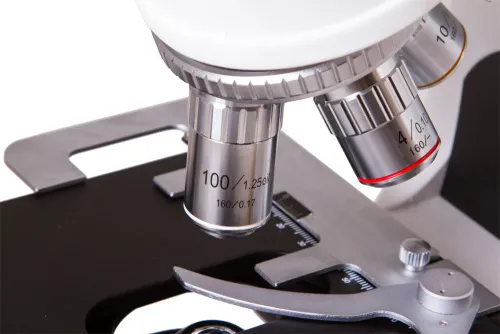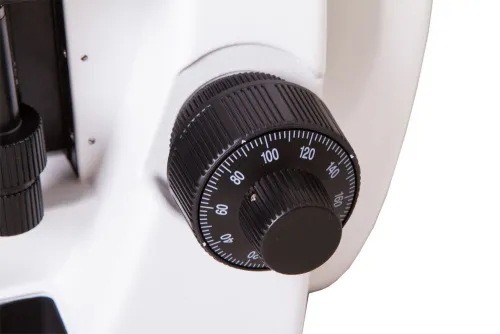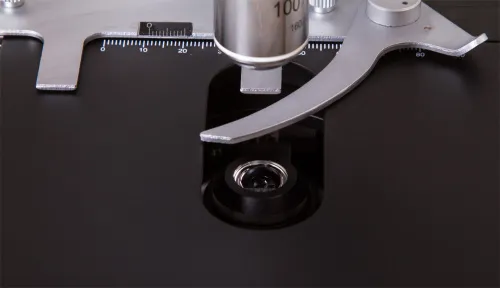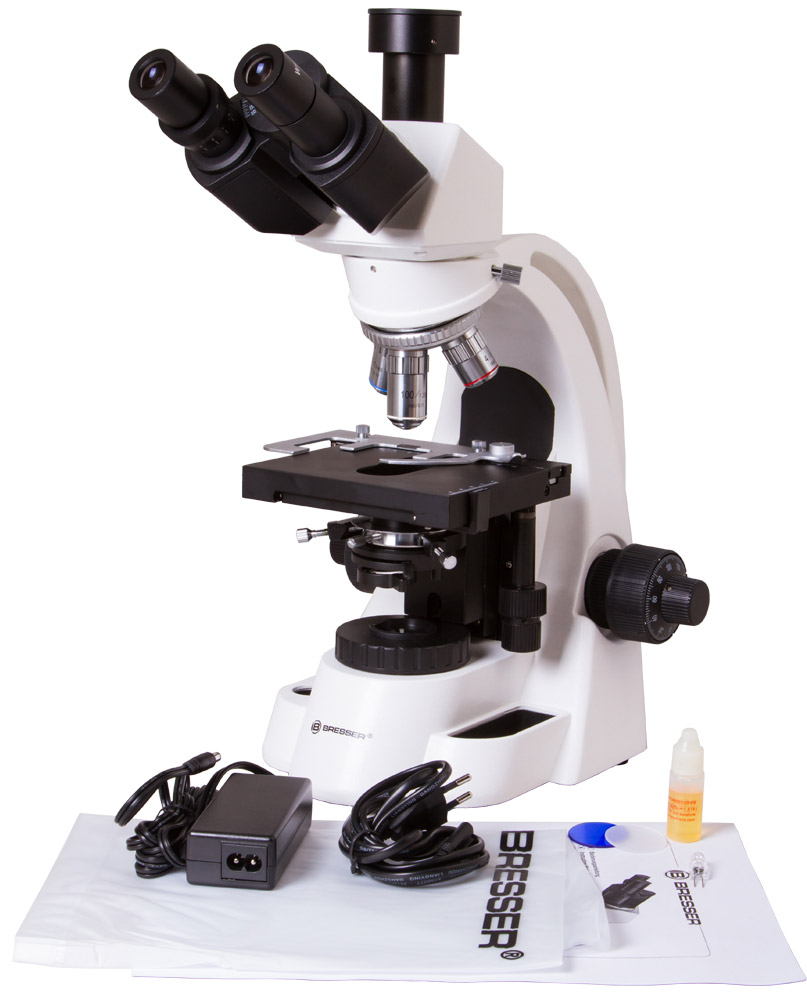Bresser BioScience Trino Microscope
Biological trinocular microscope
Trinocular
The microscope head is a core element of the microscope that you look through to see a magnified sample
40 — 1000
How much the size of a sample increases when you observe it through a microscope
Laboratory/medical
Application and use of the microscope
| Product ID | 62563 |
| Brand | Bresser GmbH, Germany |
| Warranty | 2 years |
| EAN | 4007922153902 |
| Package size (LxWxH) | 54x34x33 cm |
| Shipping Weight | 10.26 kg |
Description
The Bresser BioScience is the perfect instrument for laboratory use. The size and ergonomic design is perfect for prolonged use. The Köhler illumination system provides a brilliant image quality. The trinocular tube will connect a MicroCam or other C-Mount microscope camera directly with the optional C-Mount adapter.
The standard bright field illumination (30W halogen) ensures a pleasant and differentiated colour rendering and is also bright enough for contrasting method like phase contrast and dark field (optional).
Features:
- Köhler iluminator
- Separate AC-adapter, for high safety
- Coaxial mechanical desk with nonius scale
- Coarse and fine focusing
- 2 eyepieces: WF10x (23mm diameter)
- 4 objectives with DIN 4x/10x/40x/100x (oil) magnification
- Type of objective: achromatic
- Abbe N.A. 1.25 condenser
- Illumination: 12V/30W halogen with dimmer
The kit includes:
- Microscope
- Dust cover
- 2 eyepieces
- 4 DIN objectives
- Immersion oil
- 230V power supply (12V/3A)
- User manual
Specifications
| Product ID | 62563 |
| Brand | Bresser GmbH, Germany |
| Warranty | 2 years |
| EAN | 4007922153902 |
| Package size (LxWxH) | 54x34x33 cm |
| Shipping Weight | 10.26 kg |
| Type | biological, light/optical |
| Microscope head type | trinocular |
| Head inclination angle | 30 ° |
| Magnification, x | 40 — 1000 |
| Eyepieces | WF10x/23mm (2 pcs.) |
| Objectives | achromat DIN standard: 4x, 10x, 40x, 100x (oil) |
| Revolving nosepiece | for 4 objectives |
| Condenser | Abbe N.A. 1.25 |
| Focus | coarse and fine |
| Illumination | halogen |
| Brightness adjustment | ✓ |
| Power supply | 220–240V |
| Light source type | 12V/30W |
| Application | laboratory/medical |
| Illumination location | lower |
| Research method | bright field |
| Pouch/case/bag in set | dust cover |
Reviews
Frequently Asked Questions – Microscopes (20.04.2020)
We have gathered answers to the most frequently asked questions to help you sort things out
We have gathered answers to the most frequently asked questions to help you sort things out
Eye under a microscope: insects’ photo (20.04.2020)
Find out why studying eyes under a microscope is entertaining; how insects’ and arachnids’ eyes differ and what the best way is to observe such an interesting specimen
Find out why studying eyes under a microscope is entertaining; how insects’ and arachnids’ eyes differ and what the best way is to observe such an interesting specimen
What does hair look like under a microscope? (17.05.2020)
Read this review to learn how to observe human hair, what different hair looks like under a microscope and what magnification is required for observations
Read this review to learn how to observe human hair, what different hair looks like under a microscope and what magnification is required for observations
How does the aperture of a microscope objective lens work? (17.05.2020)
Learn what a numerical aperture is and how to choose a suitable objective lens for your microscope here
Learn what a numerical aperture is and how to choose a suitable objective lens for your microscope here
A spider under a microscope: photos and peculiarities of studying the slide (18.05.2020)
Learn what a spider looks like under microscope, when the best time is to take photos of it, how to study it properly at magnification and more interesting facts about observing insects and arachnids
Learn what a spider looks like under microscope, when the best time is to take photos of it, how to study it properly at magnification and more interesting facts about observing insects and arachnids
What does a microscope consist of? (18.05.2020)
This review for beginner explorers of the micro world introduces you to the optical, illuminating and mechanical parts of a microscope and their functions
This review for beginner explorers of the micro world introduces you to the optical, illuminating and mechanical parts of a microscope and their functions
Paramecium caudatum - your first friend from the microworld (21.11.2016)
Short article about Paramecium caudatum - a microorganism that is interesting to observe through any microscope
Questions and Answers
Submit your question/feedback

